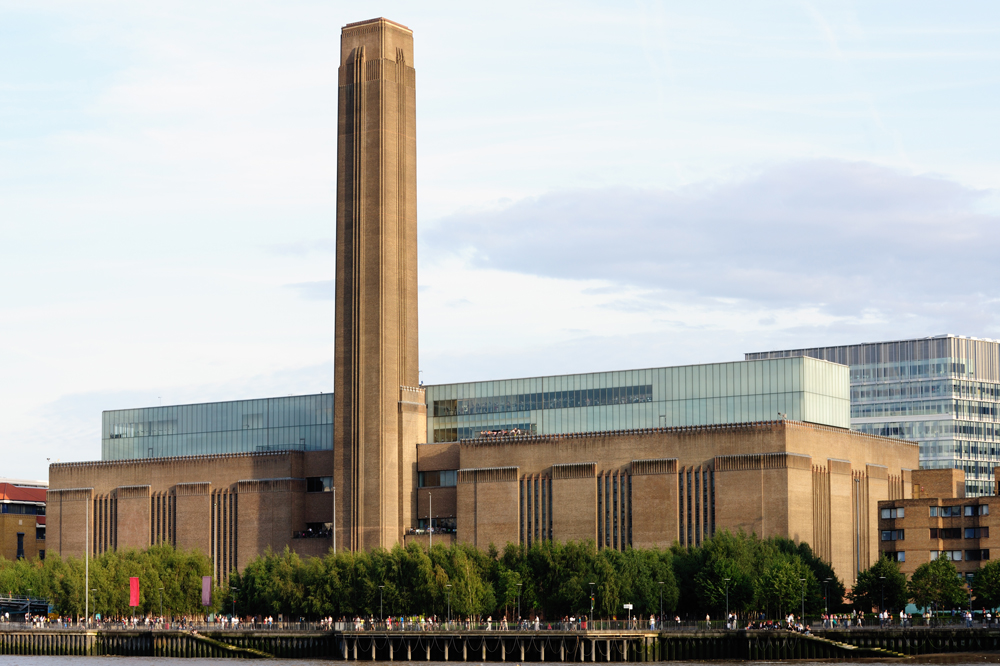A man has died after falling from Tate Modern gallery on Friday morning. The Metropolitan Police said that the incident was ‘unexpected but not thought to be suspicious’. At time of writing, the man, who died at the scene, has not yet been identified. Tate Modern closed the gallery for the day. In 2019, a British teenager threw a six-year-old French boy from a 10th-floor gallery – 30 metres above the ground – at the museum; the boy was left with serious injuries, though has since been making a recovery. His assailant was sentenced to 15 years for attempted murder.
The Rubin Museum will be closing its Manhattan space in October. The museum first opened in 2004 to house Donald and Shelley Rubin’s collection of art from Himalayan Asia and contains more than 3,000 objects. The New York Times reports that the museum is selling its current building in Chelsea – formerly Barney’s department store – and switching to a touring model. The president of the board of trustees Noah Dorsky said in a statement, ‘Historically, the Rubin’s culture embraces continual change and evolution, and in our new incarnation, we are redefining what a museum can be.’ In recent years the Rubin has faced a series of financial challenges. In 2019, it made 25 per cent of its staff redundant – as its executive director Jorrit Birtschigi sought ‘to chart a course for long-term financial sustainability and success’. Falling visitor numbers after the pandemic and an operating deficit have contributed to the decision to sell up and 40 per cent of its current staff will be laid off. The museum will continue to make grants, maintain its loan programme and repatriate items where necessary; it has also announced that its Tibetan Buddhist Shrine Room, which has found some popularity in online video form, will find a permanent home in an as-yet undisclosed location in New York.
After three months of strikes, staff at the Pompidou have ended their industrial action. The longest strike in the museum’s nearly 50-year history has ended in victory for the French Democratic Confederation of Labour (CFDT) and Force Ouvrière, the unions behind the strike. They had been seeking to assure the jobs of up to a thousand museum employees while the Centre Pompidou closes for refurbishment from 2025–30. The museum workers will now remain employed for that five-year period, but may be reallocated to different positions at an equivalent skill level: several of the museum’s major operations will be displaced to venues such as the Lumière building and the Grand Palais des Champs-Élysées. The Grand Palais will be providing 2,800 square metres of exhibition space to be programmed by the Pompidou, subject to an agreement to be signed this spring. The resolution of the strike is an early popularity boost for France’s culture minister Rachida Dati, who assumed office last month. ‘As soon as I arrived at the Ministry of Culture, I wanted to put an end to this stalemate,’ she said in a statement. Alexis Fritche, the CFDT’s general secretary of culture, said that Dati’s involvement was ‘a decisive factor’ in the ending of the strikes.
The billionaire businessman Dmitry Rybolovlev has lost his fraud case against Sotheby’s. A jury in New York took less than five hours to deliberate and rule in favour of the auction house on all counts. Rybolovlev had accused Sotheby’s of conspiring with the Swiss art dealer Yves Bouvier to sell him works at inflated prices – including Salvator Mundi, a work attributed to Leonardo da Vinci, which Rybolovlev bought from Bouvier for £127.5 million – and eventually sold for $450m. The three-week civil trial, in which the Russian businessman claimed that Sotheby’s had defrauded him of tens of millions of dollars, followed almost a decade of criminal litigation between Rybolovlev and Bouvier. Rybolovlev has long maintained that Bouvier was acting as his agent rather than as an independent dealer. The pair settled in December. It is not clear whether Rybolovlev will appeal the jury’s decision to clear Sotheby’s of all charges. The auction house was not awarded compensatory damages.
Melissa Buron has been named chief curator and director of collections at the Victoria and Albert Museum; she will take up the role in the spring. She is joining from the Fine Arts Museums of San Francisco, where she has served as director of curatorial affairs since 2021. Elsewhere in London, Alvin Li and Hera Chan, currently adjunct curators at Tate, now have new portfolios: Li will now be curator, international art, and Chan adjunct curator, Asia-Pacific, at Tate Modern. The moves result from the Tate’s partnership with Asymmetry Art Foundation, a not-for-profit company that promotes the work of Chinese and sinophone art experts. In the United States, Wendy Nalani E. Ikemoto has been named chief curator and vice-president at the New-York Historical Society, the city’s oldest museum. She is one of the few Indigenous people to be head curator of an American museum that does not primarily focus on indigenous art and culture. Eleanor Nairne, previously senior curator at the Barbican, is moving to Pennsylvania to head the modern and contemporary art department at the Philadelphia Museum of Art. Her major successes at the Barbican include exhibitions of work by Lee Krasner, Alice Neel and – in the museum’s most popular show ever – Jean-Michel Basquiat.



